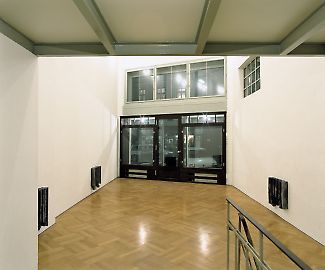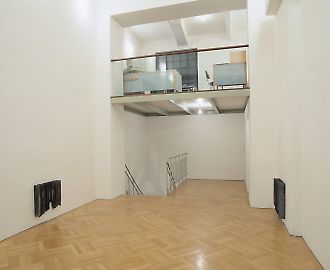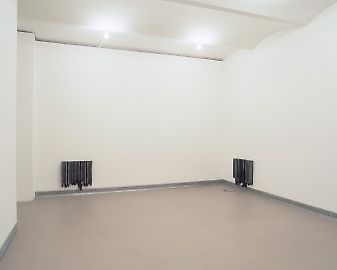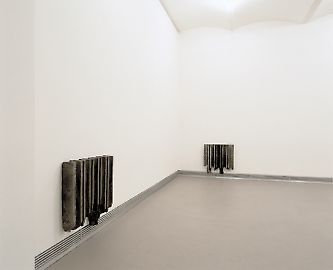Rudolf Stingel --
After intensely engaging with the possibilities of abstract painting, Rudolf Stingel’s first installations emerged in the early 1990s. Painting and sculpture combine in a way that claims an immediate and autonomous position. In a 1998 show at Georg Kargl Fine Arts, he presented his aluminum casts, through which shifted a closed system of ritualized painterly praxis towards a system of open strategies.(1)
In all of Stingel’s works, there is a constant tension typical of an intellectual exile, an exile that is sought out and built up, but where the traces of origin are never completely wiped out.
This underscores that the return from exile is also nothing more than an alternative, more painful way of going into exile. More painful, because the return is experienced in morbid remembrance. When Stingel leaves painting, he is neither a sculptor nor a photographer, nor pragmatic-conceptual, for the simple reason that he always remains a painter. There is a great deal of discipline in the way he focuses on painting and fights against every possible ambivalence. At the same time, his work, when completed, automatically indicates a kind of relaxation. It can only be slightly traced on the surface, and does not penetrate into the pedantic material of painting. […]
But the gesture that is reborn in every repetition and cannot be translated remains originary, because it is inseparably tied to the person that makes it. When Rudolf Stingel does not paint a picture, but does something else, then only in order to find out whether interrupting an automatism of gestures means divorcing oneself from them. It could be said that he distances himself from them in order to analyze and evaluate himself with the help of other activities. When he breaks out of painting, he seeks a voluntary exile far from his essence. Every work that is not a painting is a commentary.
(1) Editor’s note
Francesco Bonami, "Representing change, not standing still," in: Peter Weibel (Hg.), Kontext Kunst. Kunst der 90er Jahre, Cologne 1994, pp. 532-535.





